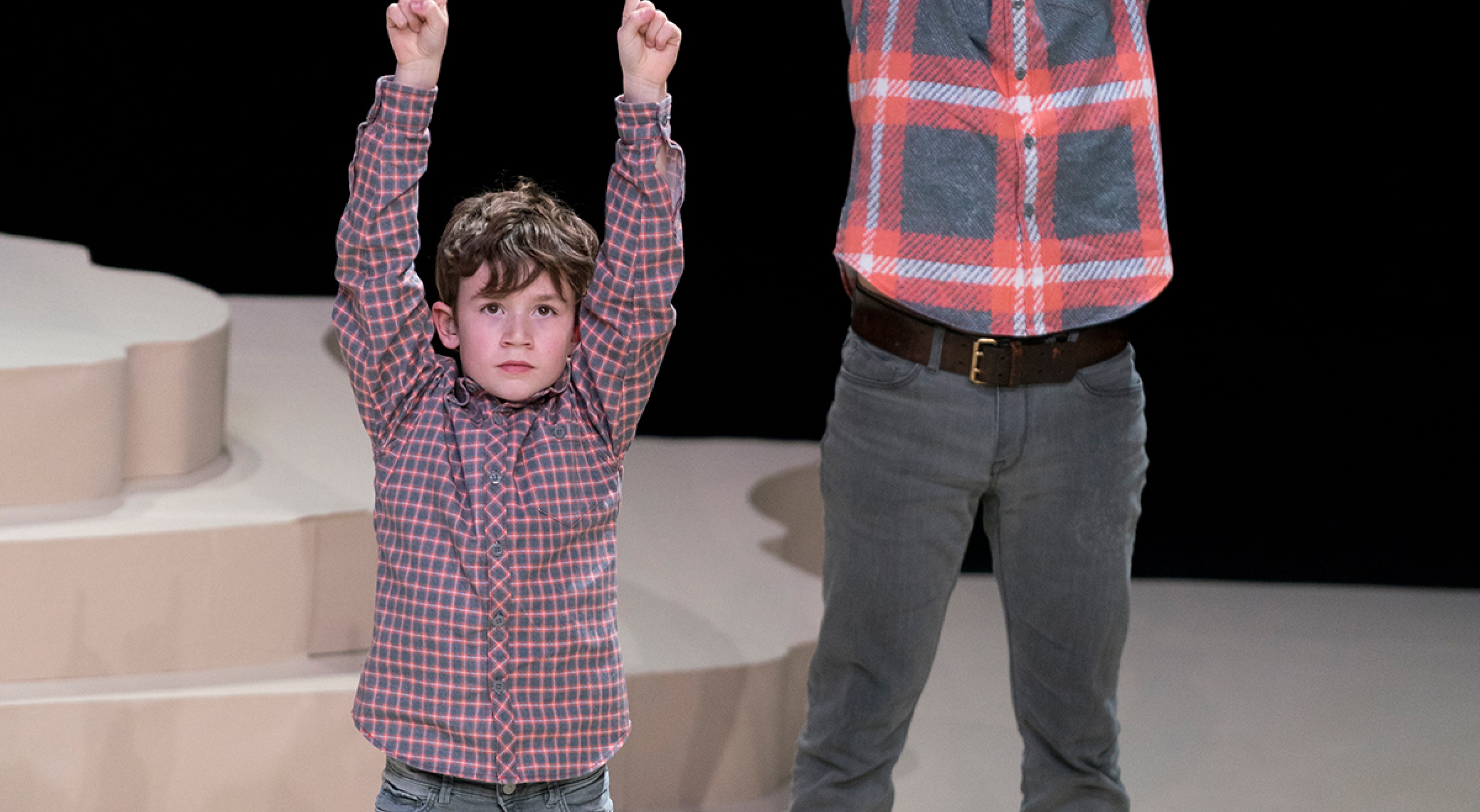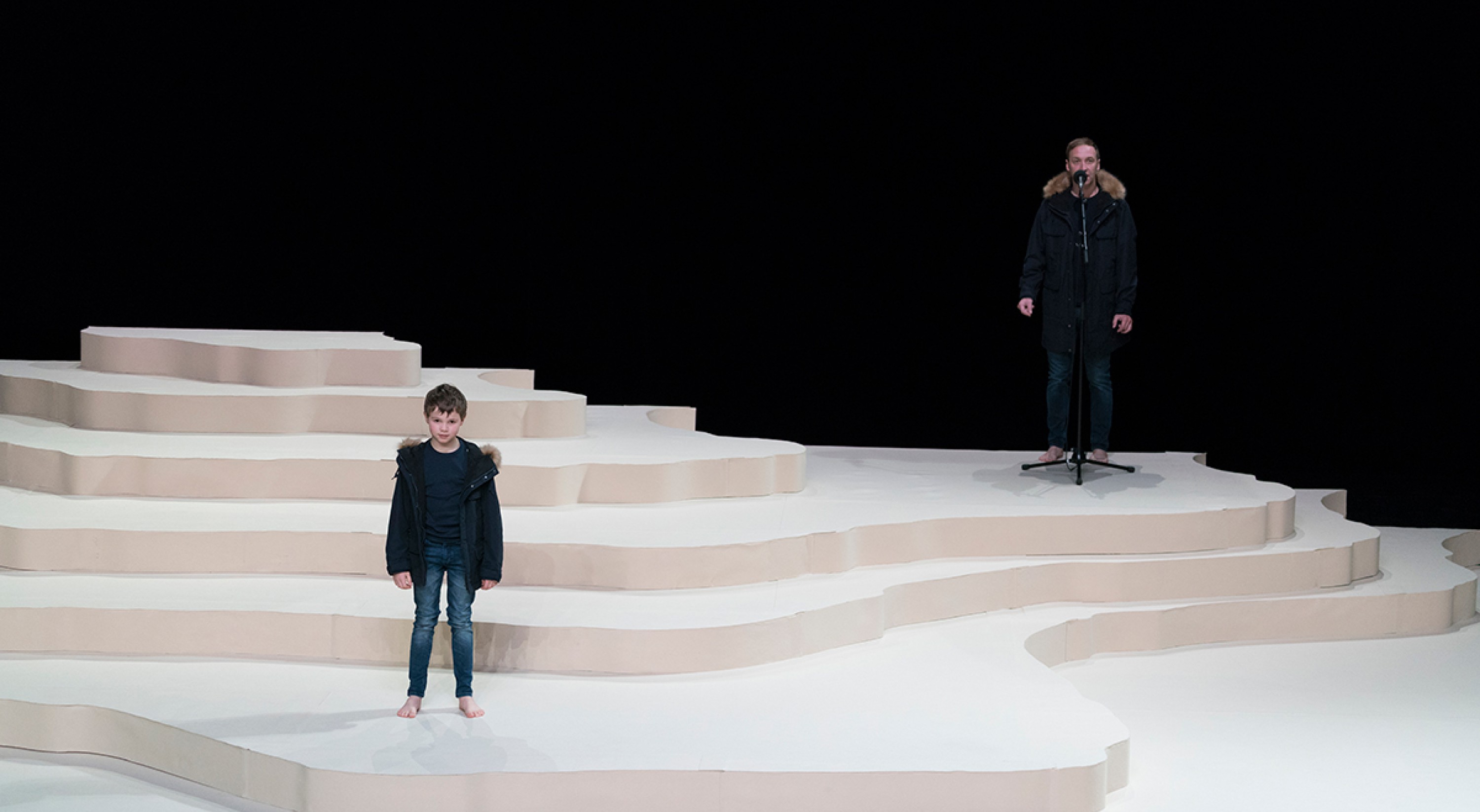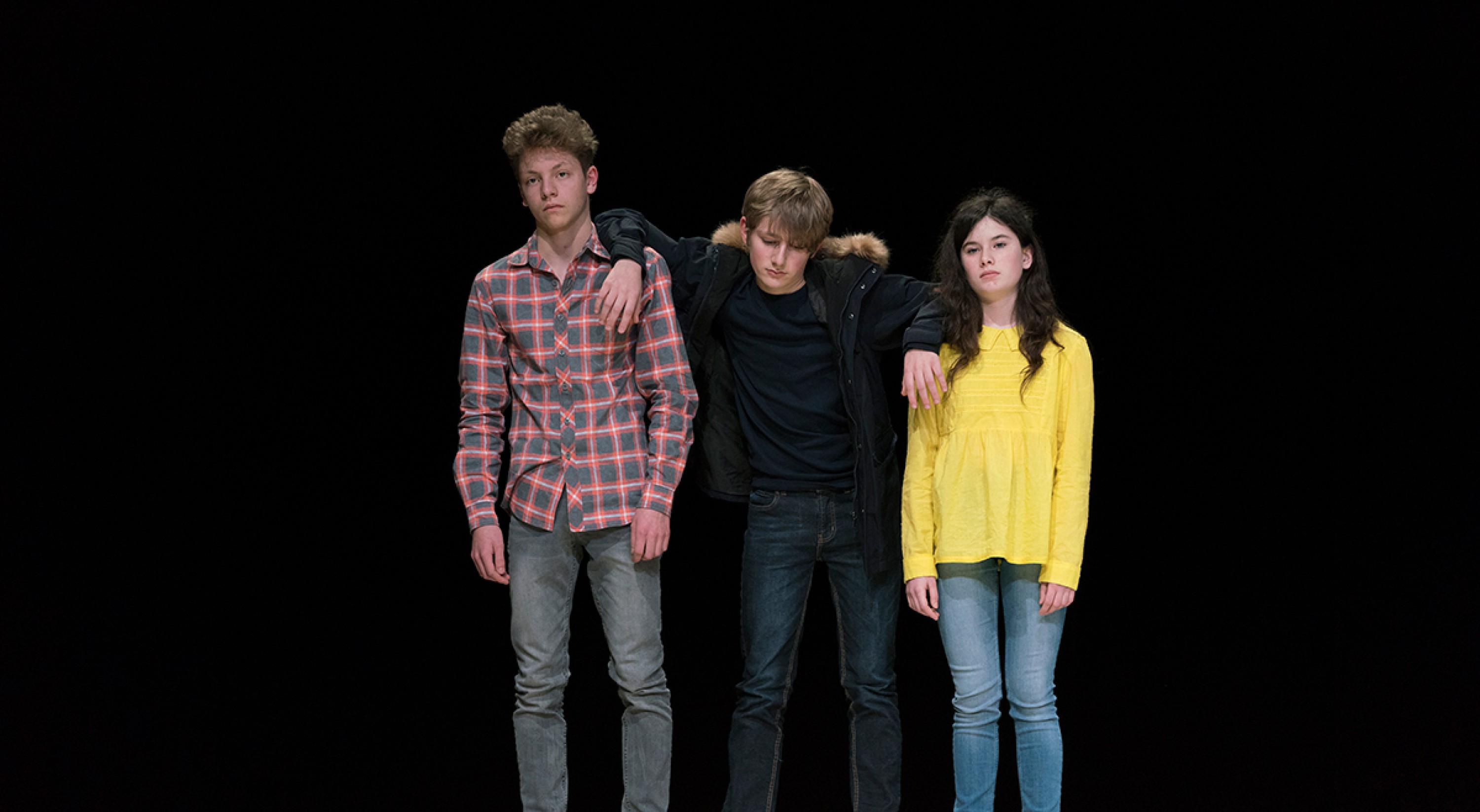Fanny de Chaillé
Les Grands
septembersept 20 – 23
Devised and directed by, Fanny de Chaillé
With the youngsters Antoine Adobati, Sacha Buisson Roux, Zoé Chapuis, Gil Perrissin, and Jeanne Grolliet (alternately), the adolescents Ulysse Genevrey, Pierrick Grillet, and Elisa Mollier Sabet, and the adults Margot Alexandre, Guillaume Bailliart, Grégoire Monsaingeon
Text, Pierre Alferi, with contributions from Fanny de Chaillé, Margot Alexandre, Guillaume Bailliart, and Grégoire Monsaingeon Songs, Dominique A
Sound design, Manuel Coursin
Stage and costume design, Nadia Lauro
Lighting, Willy Cessa
Assistant, Christophe Ives
A Display production // Co-produced by Espace Malraux scène nationale de Chambéry et de la Savoie ; Bonlieu Scène Nationale (Annecy) ; Festival d’Avignon ; La Comédie de Reims ; Centre chorégraphique national de Caen en Normandie as part of the accueil-studio scheme ; Centre de Développement Chorégraphique Toulouse/Midi-Pyrénées ; Le Carré-Colonnes, scène conventionnée Saint-Médard-en-Jalles et Blanquefort ; Le Parvis, Scène Nationale Tarbes-Pyrénées ; Les Spectacles vivants – Centre Pompidou (Paris); and Festival d’Automne à Paris // In association with Les Spectacles vivants – Centre Pompidou (Paris) ; Festival d’Automne à Paris // With support from Région Auvergne Rhône-Alpes, CND Centre national de la danse, du Carreau du Temple à Paris et de Théâtre Ouvert, centre national des dramaturgies contemporaines // First performed on 7th March 2017 at the Espace Malraux scène nationale de Chambéry et de la Savoie
What does it mean to be a child, adolescent, or adult? Without demonstrating or judging in any way, Fanny de Chaillé’s latest work mixes three generations together on stage. With a text by Pierre Alferi, the work is a playful, sensitive evocation of self-construction.
In real life, we pass from one age to the next in a seemingly unconscious way. On the Grands stage, three characters grow up before us. From childhood to adult, via adolescence, three ages in life are superimposed on each other. They dialogue with each other, asks questions, enter into conflict and come back to each other once again. What is being an adult all about? How did we get there? With an energy all of her own, Fanny de Chaillé sets up a multitude of situations: the single child or with their adult double, groups of adolescents, the adult in the face of others, or his “mini-self”, or the adolescent who stands up against them. Each expresses their own point of view, or state of mind, whether it be full of hope or otherwise.
On stage as in the text, any relationship based on authority finds no place here. Rather than talking about childhood and learning, Fanny de Chaillé and Pierre Alferi have decided to make them talk for themselves. With its different strata, the stage set, designed by Nadia Lauro, sets up the possibility of interplay between scale and time. Before the audience, children and their empirical relationship to things evolve, as well adolescents and the “slogan-language” with which they address themselves to the outer world. And there are adults too, hovering between the joys of their existence and the weight of responsibility.
See also



